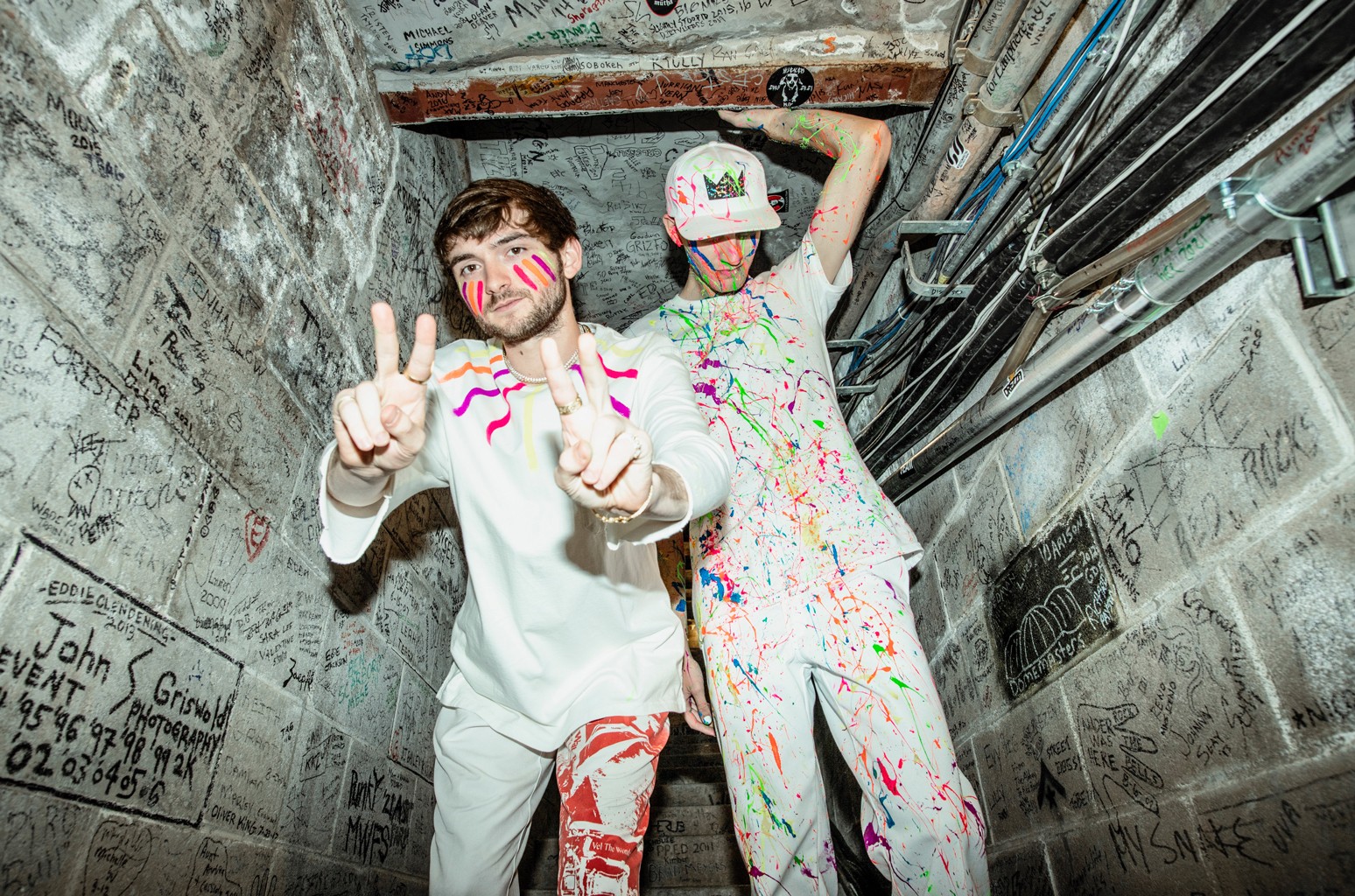When EDM was exploding in the United States a decade ago, Robby Hauldren and Freddy Kennett were adolescents in Chicago having their young minds blown by the genre.
Having their first experiences with dance music at Chicago’s Lollapalooza and Spring Awakening festivals helped the duo — known to most as Louis the Child — get into production, and in the decade since these formative experiences they’ve become scene stars in their own right, the next gen of the dance music boom.
With their latest project Euphoria, out today (October 15) via Interscope, the duo is paying homage to the music, era and scene that helped shaped them. The EP is inspired by artists like Skrillex, Porter Robinson, Madeon, Wolfgang Gartner, Calvin Harris and many of the other stars of the era. While not necessarily pummeling dubstep or mainstage bangers, Euphoria’s size, brightness and production elements are clearly paying respect to those formative years. The six-track EP features collaborators including Arizona, Theophilus London and Bea Miller.
The duo — represented by agent Jay Moss at Wasserman and managed by Joey Papoutsis at Keel Management — are currently on tour behind the project, playing not one but two shows tonight (a set in Chandler, Arizona, then a club set at Zouk Nightclub in Las Vegas),with tour dates extending through the end of the year.
Here, Hauldren and Kennett share ten things to know about Euphoria, about sneaking into the Lollapalooza VIP section as a 12 year old, touring in the pandemic era, and how the sounds they’re playing right now take them all the way back to the beginning.
The project was inspired by Peak EDM
“We kind of went down like a YouTube rabbit hole, watching videos from some of the first festivals we went to, Lollapalooza 2010 and 2011 and the first ever Spring Awakening in Chicago,” says Hauldren, “and were reminiscing on the feeling of being at those concerts and what the music world was like back then — when we were first discovering electronic music, when that huge boom happened. It was like ‘Man, there was something about that time that it feels distant, and it feels like some of the some of that magic has sort of gotten lost in a way.'”
“Electronic music has evolved so much since then — in a lot of ways for for the better,” he continues. “But looking at the energy of the crowd then and what the music was like, how it wasn’t the craziest, biggest, nuttiest stages, we have the best memories from back then.
Seriously, they have the best memories from back then
“The first time I saw Rusko, I was 12 years old,” says Kennett. “It was the first year that I snuck away from my parents at Lollapalooza to get into the crowd and try to get a good spot. So I was like the 12 year old right next to all these older kids with all of their totems and signs going crazy. It was just like, ‘I love this s–t. This is crazy. This is everything.’ All the people going nuts with their hands up and and dancing, and the energy, I could feel it. But but my parents were texting me like, ‘Where are you? They were so stressed. Finally they hear that I’m in VIP, and that I snuck in there and and I’m good. It all turned out well, but it is a funny snapshot.”
The Music They’re Paying Homage To Is The Music Of Their Generation
“I feel like the music you’re listening to and falling in love with when you’re in high school and stuff is the stuff that sticks with you for life,” sayas Hauldren. “That’s the most impressionable music time of your life. And I feel like for me, that was the time where I was like, ‘I feel like I kind of belong to something, this is my generation’s music and I can be a part of this thing that’s happening.’ That, to me was like just the coolest thing at the time, because I had been into shows before, but going to see like Paul McCartney with your parents is dope as f–k. Like, don’t get me wrong, but you’re seeing music that, in a sense, belongs to a different generation, whereas Skrillex belongs to our generation.”
Euphoria is inspired by the EDM era, but it also evolves the sound
“It’s kind of like jazz,” Kennett says of producing this new project. “You understand some of rhythmic themes, for example, of the syncopation or rhythms that people are using in that style of music and what type of chord progressions or what voicings of the chords they’re using and what makes it feel a certain way. Once you start to pick up some of the matrix coding for how it’s made it, you can start to shape that and change it a little bit. Like, ‘I’m going to use it in this new way with this type of kick drum instead of the type of a kick drums they’re using…Every decision you make, you can either try to make it exactly like the thing you’re trying to reference or be like, ‘Let’s push the boundary.'”






Post comments (0)